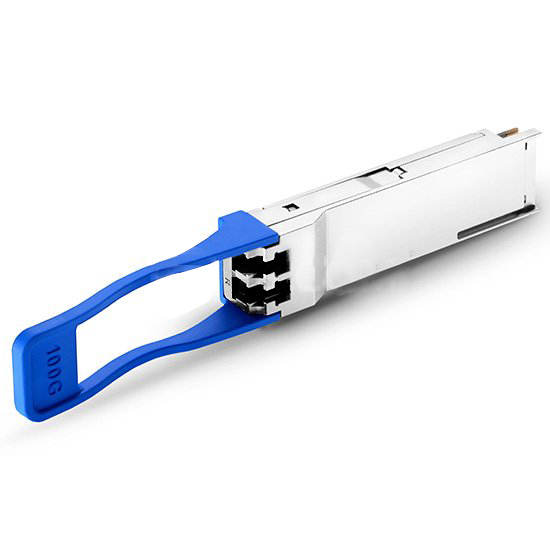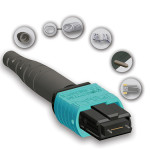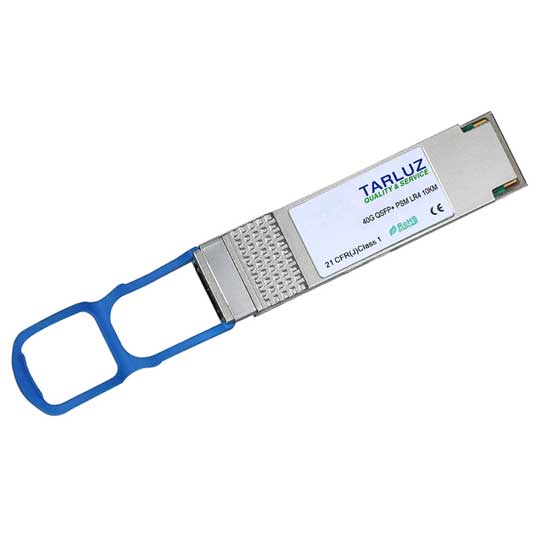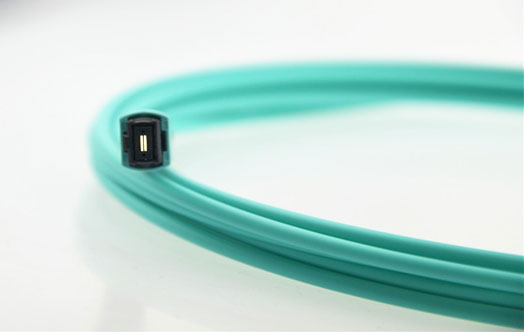The QSFP28 standard is designed to carry 100 Gigabit Ethernet, EDR InfiniBand. or 32G Fibre Channel. This transceiver type is also used with direct-attach breakout cables to adapt a single 100GbE port to four independent 25 gigabit ethernet ports (QSFP28-to-4x-SFP28). Sometimes this transceiver type is also referred to as „QSFP100“ or „100G QSFP“ for sake of simplicity. Please refer to the following tips for choose the right 100G Optical Modules for your modern data center.
Optical Modules Selection Based on Distance
- <100 meter, When the transmission distance is within 100m, The QSFP28 SR4 optical module is highly recommended. The QSFP28 SR4 supports links up to 70m via OM3 Multimode fiber and 100m via OM4 Multimode fiber, with MPO / MTP fiber interface. It offers 4 independent transmitting and receiving channels, and each is with 25Gbps able to be aggregated into 100Gbps. Meanwhile, the QSFP28 SR4 optic module is also ideal for the connections from rack to rack in the data center.
- 100m to 10km, When the transmission distance is over 100m but shorter than 10 km, the QSFP28 LR4 optical transceiver is preferred. The QSFP28 LR4 is a fully integrated 4 × 25Gbit/s optical transceiver module, supporting distance up to 10 km. So for long span 100G deployment, such as cabling between two buildings, QSFP28 LR4 with duplex LC and single-mode fiber cable is the perfect option.
- >10km, When transmission distance exceeds 10 km, the QSFP28 ER4 module is ideal for very long transmission distance. It provides superior performance for 100G Ethernet applications up to 30km links and converts 4 input channels of 25Gb/s electrical data to 4 channels of LAN WDM optical signals and then multiplexes them into a single channel for 100Gb/s optical transmission.
Optical Modules Selection Based on Applications
- QSFP28 CWDM4 provides a 100G Ethernet high-speed link with a maximum transmission distance of 2 km, which interfaces with LC duplex connectors, and uses Mux/Demux technologies with 4 lanes of 25Gbps optically multiplexed into and demultiplexed from duplex single-mode fiber.
- QSFP28 PSM4 doesnot need any MUX/DEMUX technology for each laser but it does need either a directly modulated DFB laser (DML) or an external modulator for each fiber. Besides, with an MPO/MTP interface, PSM4 modules can transmit data at 100Gb/s from point to point over 2 km or can be divided into dual 50Gb/s or quad 25Gb/s links for linking to servers, storage and other subsystems.
It’s seen from that both of QSFP28 CWDM4 and QSFP28 PSM4 are designed to meet the requirement for intermediate or mid-reaches for datacenter applications (500 m to 2 km). And they both use WDM and parallel single mode fiber technologies and support transmission distance up to 2 km.
When faced with such a situation, maybe we can make a decision from the two aspects. For one thing, from the aspect of an inner transceiver module structure, by comparison , PSM4 can be more cost-effective due to its lower component costs. For another thing, from the infrastructure viewpoint, PSM4 will be more expensive when the link distance is long, because PSM4 uses 8 optical single-mode fibers while CWDM uses only 2 optical single-mode fibers.









